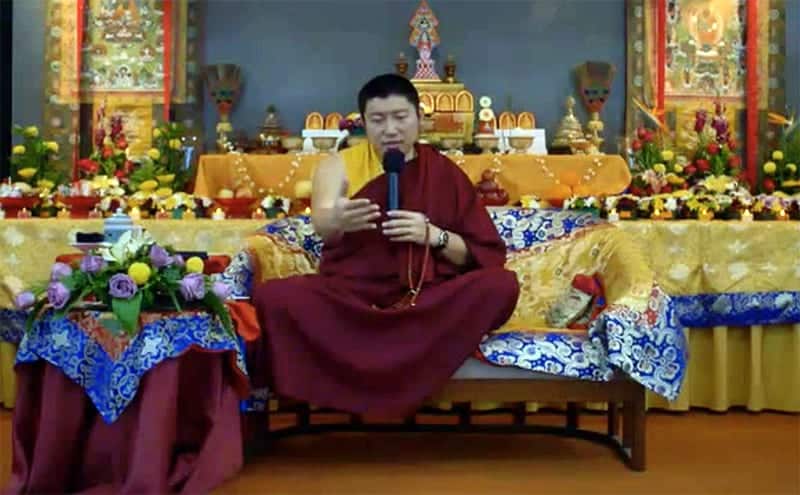Three Levels
We can categorize Buddhist teachings in many different ways. In this video excerpt from a teaching in Malaysia, Phakchok Rinpoche presents one classic view of three levels of teaching as laid out in the Tibetan Buddhist perspective. Here, he explains that buddhas teach differently according to the capabilities and inclinations of their audience. Therefore, we see different levels of teaching depending upon the interest and the motivation of disciples. Rinpoche reminds us that we begin with the teachings that we can understand and digest.
Translation in Chinese
Three Levels: The Beginning Teachings
We can understand that the buddhas appear to their listeners in a physical form that is approachable and understandable to them. So, when Śākyamuni Buddha taught the basic level of teachings, the fundamental teachings, he appeared as a human being. Of course, he showed special signs and characteristics who had attained enlightenment, but basically, he appeared before his disciples as a human. In this form, he taught the fundamental teachings, and we often refer to this as the “first turning of the wheel of Dharma”.
The first turning teachings center on the mind and on discipline. And in these teachings, the Buddha laid out core principles for our paths. These include:
- The four truths of the noble ones
- The four thoughts that turn the mind to the Dharma, or the “four mind changings”
- The four seals of the Dharma
- The four immeasurable attitudes
All Buddhists study, reflect on, and practice these teachings. We can develop an intellectual understanding of these important practices by reading and receiving teachings, and through continued contemplation.
Three Levels: The Teachings of the Mahayana
In the second turning of the Dharma wheel, the Buddha taught disciples who were not content with self-liberation. In the Mahayana or Great Vehicle, context, the students were prepared for a vaster view. Thus, the audience saw the Buddha not as a human being, but as an already enlightened being who manifested in order to teach. Additionally, the retinue for these teachings includes the bodhisattvas who have already engendered the aspiration of great compassion. And the teachings emphasized the six pāramitās, or perfections.
The view of the Mahayana stresses three doors of liberation. These are:
- Emptiness
- Absence of characteristics or marks
- Wishlessness, or non-focus
Again, these teachings are based upon the mind. As we practice the Mahayana, we make efforts to hear, read, study and contemplate these principles and develop an intellectual appreciation. And by meditating on these topics, we can come to experience the truth of these teachings.
Three Levels: The Teachings of the Vajrayana
And finally, in the third turning of the Dharma wheel, we encounter a much different scenario. Buddhas teach Vajrayana teachings by manifesting as the Buddha associated with a particular tantra. And these buddhas teach to bodhisattvas who are advanced on the path. Moreover, these teachings are no longer based upon the mind. Instead, they are wisdom-based.
Because Vajrayana reflects the essence or nature, we cannot merely comprehend them intellectually. So reading a lot of books is not going to help us in this instance. We come to experience the perfection of nature through practice itself. And this can be difficult to digest. However, Rinpoche advises us to simply follow the instructions, do the practices we are taught, and eventually, we will experience everything as it is–perfect and pure.










Responses